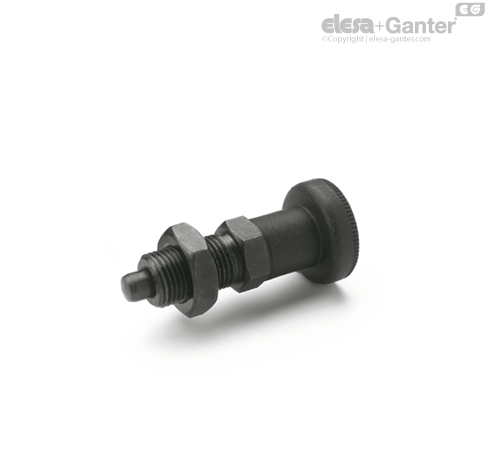
An indexing plunger is an essential component used in various industrial applications to ensure secure and accurate positioning of machine parts. Designed for precision, reliability, and durability, these plungers play a crucial role in assembly lines, automation systems, and mechanical fixtures. Whether used in manufacturing, aerospace, or automotive industries, an indexing plunger helps maintain efficiency by locking and locating parts with ease.
What is an Indexing Plunger?
An indexing plunger is a mechanical device consisting of a plunger pin, a housing, and a spring mechanism. When engaged, the pin locks into place to hold a component securely. When disengaged, the pin retracts to allow movement or repositioning of parts. This functionality makes the indexing plunger ideal for applications requiring repetitive locking and releasing of mechanical components.
Key Features of an Indexing Plunger
High-quality indexing plungers come with a variety of features that make them suitable for demanding industrial applications:
- Secure Locking Mechanism – Ensures reliable positioning and prevents accidental movement.
- Durable Construction – Made from materials like stainless steel, carbon steel, or thermoplastics for longevity.
- Spring-Loaded Design – Facilitates quick engagement and disengagement of the plunger pin.
- Multiple Pin Sizes and Lengths – Available in different configurations to suit various applications.
- Corrosion-Resistant Coatings – Provides protection against environmental factors and enhances durability.
- Manual and Automatic Operation – Available in designs with pull knobs or push-button activation for user convenience.
Applications of an Indexing Plunger
Due to their versatility and precision, indexing plungers are widely used in numerous industries. Some common applications include:
- Manufacturing & Automation – Used in assembly lines and automated systems for accurate positioning.
- Aerospace Industry – Helps in securing and aligning aircraft components.
- Automotive Sector – Used for locking adjustable parts in vehicles and machinery.
- Medical Equipment – Ensures stability in adjustable medical instruments and devices.
- Tooling & Fixtures – Used in jigs, fixtures, and workstations to maintain precision.
- Furniture & Ergonomic Equipment – Assists in height adjustments and secure locking in adjustable desks and chairs.
How to Select the Right Indexing Plunger
Choosing the right indexing plunger depends on various factors, including:
- Load Capacity – Determine the required holding force to prevent displacement of components.
- Material Selection – Choose corrosion-resistant materials for harsh environments.
- Pin Diameter & Stroke Length – Select dimensions that fit your application needs.
- Locking or Non-Locking Type – Decide whether a fully locked position is necessary.
- Manual vs. Automatic Actuation – Consider how frequently and easily the plunger needs to be engaged or disengaged.
Advantages of Using an Indexing Plunger
Investing in a high-quality indexing plunger provides several operational benefits:
- Enhanced Precision & Accuracy – Ensures repeatable positioning with minimal error.
- Improved Safety – Prevents accidental movement of critical machine parts.
- Quick & Easy Adjustments – Allows for seamless repositioning and locking.
- Reduced Wear & Tear – Minimizes friction and prolongs equipment lifespan.
- Versatile Application – Suitable for various industries and mechanical setups.
Maintenance Tips for an Indexing Plunger
To ensure long-lasting performance and reliability, proper maintenance of an indexing plunger is essential:
- Regular Cleaning – Remove dirt and debris to prevent mechanical failures.
- Lubrication – Apply appropriate lubricants to reduce wear and ensure smooth operation.
- Periodic Inspections – Check for any signs of wear, misalignment, or corrosion.
- Replacement of Worn Parts – Swap out damaged components to maintain performance.
- Proper Installation – Ensure correct fitting and alignment to prevent malfunctions.
Conclusion
An indexing plunger is a vital component for achieving secure and precise positioning in various mechanical applications. With its ability to lock, locate, and reposition components efficiently, it enhances both safety and productivity. By selecting the right indexing plunger for specific needs and maintaining it properly, businesses can improve operational efficiency and extend the longevity of their equipment. Whether for industrial automation, aerospace, or medical applications, an indexing plunger remains an essential tool for precision engineering.





Leave a Reply